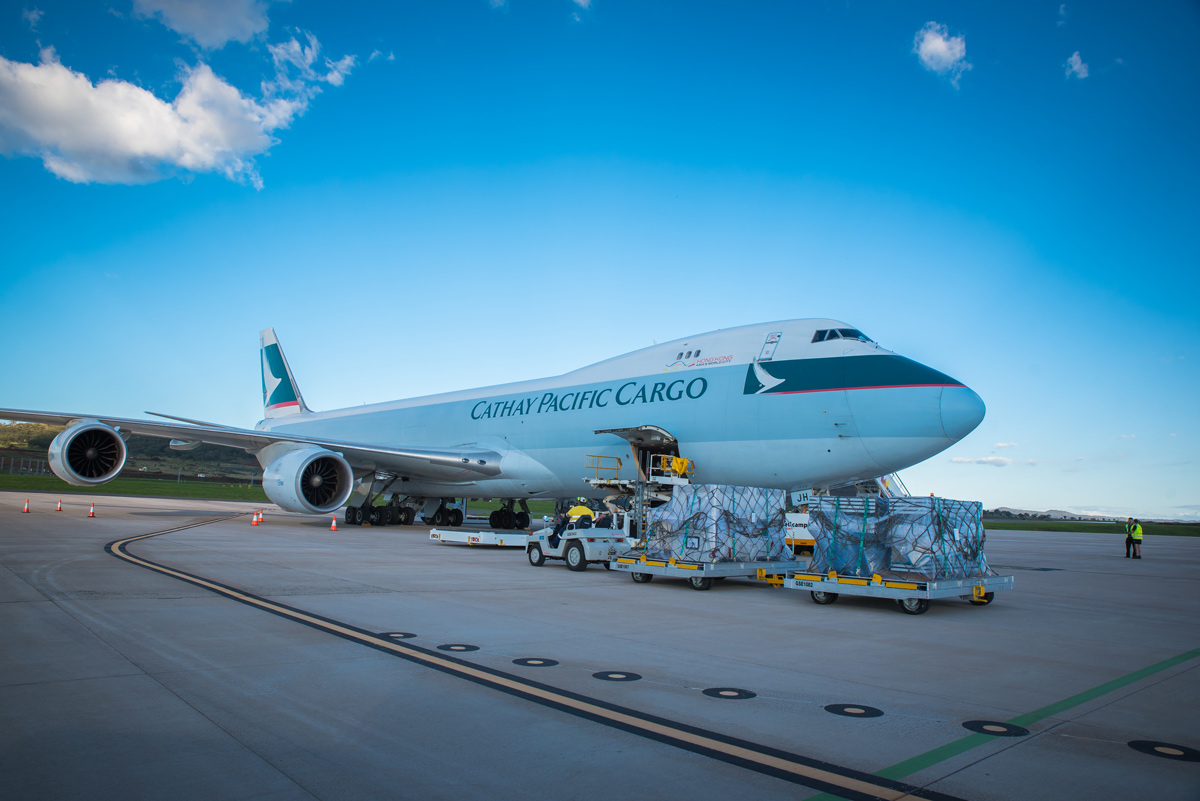According to one freight forwarder, ‘demand has been crazy. ‘I’ve never seen anything like it.’ And e-commerce and Christmas mail have helped lengthen this year’s ‘crazy’ air freight peak, which is now predicted to run into January.
This has been one of the strongest peaks in nearly a decade, with lack of air freight capacity leading to shippers sending goods by sea in November, ‘as it’s quicker’, says another forwarder than the four-to-five week lead times available by air on some routes.

Alex Lennane, publisher, The Loadstar
Carriers have been turning away even the highest-paying freight, according to other forwarders. A combination of less maindeck capacity on the market, following the decision by several combination carriers to downgrade their freighter fleets in past years, plus growth in trade and a need to restock inventory this year, as well as higher demand for cross-border ecommerce, has created a perfect storm for air freight shippers.
‘The issue with capacity seems to be affecting everywhere, with all major trade lanes backlogged – even those that shouldn’t be,’ says one forwarder.
European carriers, eyeing higher yields, have contributed to the capacity crunch by picking up e-commerce traffic from Asia and the Indian sub-continent and routing it through Europe before taking it to the US.
‘That is knocking out some point-to-point capacity that is normally there,’ says one source. ‘E-commerce is also two-way, and that accounts for some of the congestion. Bellyhold is very congested into Shanghai – that’s an unusual thing.
That means that with the longevity of this peak, and the fact that it’s multi-directional means that ‘there are two head hauls’.

Ingo-Alexander Rahn, global head of air freight for DHL Global Forwarding said that the tight market looked likely to continue. ‘Based on observations throughout the year, and the world economy performing well, it’s likely that air freight demand will stay high in the next months too.’
As a result, he adds, ‘we have signed significantly more block space agreements on the main routes and we secured additional charters on the trans-Pacific, as well as European routes.’
Asia has been one of the strongest markets this year – and pricing has reflected that. At some points in the peak, forwarders were quoted single-digit-plus per kilo from Asia to Latin America, with some quotes as high as double-digit per kilo.
‘Transpacific outbound Asia is strong, as well as the trading between Asia and Europe and vice-versa,’ says Rahn. ‘But we also observe strong trading between Europe and the US, as well as South America. Also intra-Asia trading is performing well. We believe trade will stay strong on these routes in the next months.’
Forwarders agree that they don’t expect rates to fall back next year – and most predict a double-digit rise in contract rates.
One air freight forwarder, speaking from Shanghai where he noted that landing slots, rights and permits have been hard for airlines to obtain, added: ‘Across Asia the airline mood is buoyant. We will see average contract rate increases next year of between 15 and 20 per cent.
‘No one is talking about extra capacity. Forwarders are asking for more contract space, which is driving carrier confidence. Some carriers are trying to reduce their committed space to increase free sale and take advantage of the expected tight market next year.
“We have signed significantly more block space agreements on the main routes”
Ingo-Alexander Rahn
Global head of air freight for DHL Global Forwarding
‘I think customers have seen a tough fourth quarter in terms of rates and delays – but I don’t yet think the mentality is one to accept [rate rises] into 2018 – but it has to happen. After a number of years in the wilderness, it looks like space is becoming king again in Asia.’
CEO of Panalpina, Stefan Karlen added that strength in the automotive and retail sectors had helped drive up prices. ‘Shippers have understood that it is all about capacity, and have engaged with higher rates.’
Rahn says that securing capacity in 2018 will be important. ‘Volumes will likely grow in the coming months. The market is increasingly changing from a buyer’s to a seller’s market. We have very good relationships with the air freight carrier companies. But the new normal is to cater for sufficient access to capacity.’
He adds that airlines were keeping capacity tight. ‘Some carriers are applying more and more dynamic pricing, especially on constrained routes. They actively manage their yields by exploiting the ad hoc market by cancelling scheduled flights. This must then be compensated via charter flights to ensure a smooth cargo movement.’
Freight quote and booking platforms have noted high spot-market prices. Manel Galindo, CEO of Freightos WebCargo, says: ‘I expect this auction-like market behaviour to continue. I’ve seen forwarders paying more than €18 per kg (over US$20/kg) for Europe to South America, and even one offer around €30 per kg. These prices aren’t realistic – or at least they shouldn’t be.’
While Galindo suggests that shippers outside of the high-margin pharma and tech markets would start looking for modal alternatives to air freight in a bid to keep costs down, Rahn adds: ‘In contrast to past years, the engineering and manufacturing sectors, as well as the chemicals sector are driving the growth.’
While 2018 looks as if it will be another year of high air freight demand, IATA says the pace of growth will slow, but volumes are on course to grow 4.5 per cent in 2018, with yields up four per cent.








